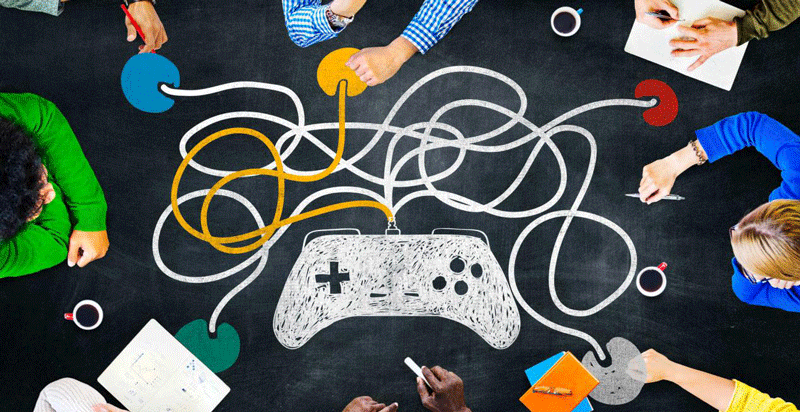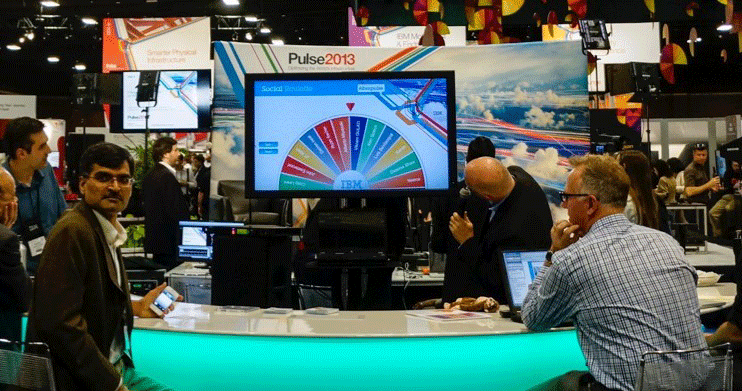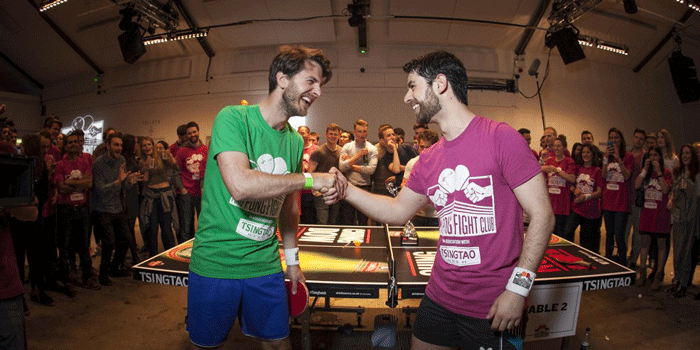How the Trend Gamification Is Changing Events In 2020
From Candy Crush to Fortnite, video games have overtaken movies and TV and movies as America’s favorite time-consuming leisure activity. But why?
What makes video games so addicting and rewarding? And, how can event planners leverage those rewarding mechanics in their events to tap into some of that magic?
Welcome to the wonderful world of event gamification. Let’s talk about how event planners can leverage some of those Fortnite qualities at their next event.
What is Gamification?
Gamification involves taking your existing experiences (e.g., website, event, platform, etc.) and merging them with game mechanics to encourage increased participation and envoke some of thecore emotions and triggers associated with gaming (i.e., good moods, increased attention, and binge-worthy obsession).

At its core, gamification is more about psychology than fancy tech.
While video games can certainly be addictive, positive, negative, and everything in between, there’s one thing that’s certain — they drive behavior.
For event marketers, the ability to invoke certain behaviors, responses, and reactions to your content can help you build sustainable events that reward and engage your audience in profound, meaningful ways.
Let’s take a moment to clarify.
Gamification is not the act of transforming your event into a video game. It’s when you take inspiration and mechanics from video game design (e.g., social leaderboards, rules, teams, etc.) to help tap into some of the magic that make video games such an incredibly addicting phenomenon.
How does it work? Let’s look at some examples.
Examples of Event Gamification
Gamification can be as simple or complex as you want it. Let’s look at three really simple (and cheap) gamification examples that you can apply to almost any event.
1. Merge Social Components With Presentations
When you play video games, you don’t just accomplish objectives. You accomplish objectives together. Sure!
There are single-player games, but it’s the multi-player blockbusters that dominate the gaming space (e.g., Fortnite, Call of Duty, World of Warcraft, Apex Legends, etc.).
Consider blending social elements into presentations.
Consider encouraging attendees to share social posts while the event is ongoing. Not only does it connect them together, but it helps brand your event to users across social media.
You can set up your own system to do this with leaderboards and cash (or VIP) prizes. Or, you can use vendor tech like LiveTweetApp. It just depends on your goals.
2. Blend Networking With Leaderboards
Another key gaming mechanic is the leaderboard. It’s the magic ranking system that tugs on our competitive heartstrings.
Why not take that leaderboard and incorporate it into your event’s networking component? Put up a leaderboard and get everyone talking.

Ask quiz questions, hand out prizes, and involve people in a competitive networking experience.
This works both in-person (example: quizzes at booths) or online (example: social media scoreboard for the event).
3. Turn Booths into Prize Booths
Of course, let’s get to the big one. Games reward you. If you level up, you get a new cosmetic item, rank next to your name, or item unlock.
It’s that never-ending cycle of rewards that keeps people coming back again-and-again. Think about making prizes a component of your booth experience.
How does that work?

Let’s look at vendor software like LiveCube. Attendees can earn points and badges for engaging with booths, answering questions, performing on quizzes, and engaging on social media.
This helps motivate users to attend every booth possible, which gives your attendees more overall value — as well as your core vendors/sponsors.
The Benefits of Using Gamification at Your Next Event
1. Creates a Fun Atmosphere
Want to know why companies that use gamification have 700% higher conversion rates? Because it’s fun! Let’s strip the complicated psychological elements and branding elements out for a second.
We could dive deep into Google Scholar and pull up 400,000 research articles. Or... we could just keep it simple.
Gamification is fun.
We play games because they’re fun!
It’s not rocket science. Fun events are better events. You want to create a memorable event experience that invokes positive memories down the road. That’s what gamification is really all about.
2. Helps Boost Participation
Did you know that 61% of business executives take breaks at work to play video games on their phones?
Over 50% of those same executives say that these games make them feel more productive afterward. Gaming can be rewarding.
83% of learners say that gamification helps them feel more motivated to engage and learn.
There’s a reason that there are over 180 million active gamers in the United States that each spends an average of 13 hours a week into video games.

They’re addicting, fun, and rewarding. Why not sprinkle a little of that magic on top of your events?
It could be the secret sauce that takes your struggling ticket sales and turns them into rocket-fueled sellouts.
3. Works in Any Event Setting
From concerts to trade shows to super-serious B2B keynotes, gamification works anywhere and everywhere.
Sure! There are some gamification elements that work best at certain types of shows.
But the core premise is applicable to any type of event. You want to take the elements that make video games so appealing and distill them down into your event.
Since you can do this in a plethora of ways, gamification will certainly work for your unique, niche, and weird event type.
4. Provides a Rewarding Experience
Games are rewarding. Over 60% of learners say that competition and leaderboards would enhance their learning experience.
A further 89% say that a point system would boost their engagement.
From digital points to physical prizes, any type of reward helps push attendees to engage, learn, and communicate in novel ways.
The main goal of any event planner is to create a rewarding experience for everyone involved, right?






